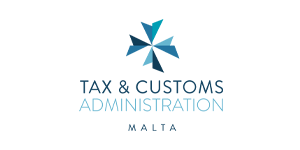- Customer Stories
- Malta Tax and Customs Administration
Malta Tax and Customs Administration achieved this using • SAS® Visual Investigator • SAS® Visual Analytics • SAS® Intelligent Decisioning on SAS® Viya® 4
The Malta Tax and Customs Administration automatically detects compliance discrepancies and filing errors with SAS Viya
Malta, the archipelago nation in the Mediterranean Sea between Sicily and Africa, is an island chain that conjures images of picturesque seaside villages, narrow cobblestone streets, honey-colored limestone architecture, and a wealth of ancient temples and castles to explore. For the Maltese, though, island life is much the same as for other Europeans. They work hard and expect fair wages and fair taxation for their efforts. But they sense that the system isn’t fair.
Changing that perception falls to the Malta Tax and Customs Administration (MTCA), formerly the Office of the Commissioner for Revenue. The administration’s renaming in May 2023 was part of an initiative to revitalize work started in the 2012 Commissioner for Revenue Act to consolidate the individual commissioner posts for income tax, value-added tax and customs under one commissioner. That’s now part of a larger three-year strategic plan to create a more “modern and adaptive” technology- and data-driven administration “aligned with the changing needs of a global, digital society and economy,” an administration that ensures “that every Maltese, individual or body corporate, pays their fair share of taxes.”
A successful outcome of the plan is not only an organizational transformation, but also one of public opinion. Today, many Maltese view the MTCA as a punitive investigative administration relentlessly pursuing tax offenders, but the MTCA’s mission – especially now – is to proactively engage with citizens and help them accurately file their tax returns.
We are not investigative officers in pursuit of culprits, but an administration that can assist citizens and businesses in adhering to regulations, and we can be a valuable partner in supporting taxpayers. We aim to maximize the data at our disposal to enhance compliance, enforce regulations and optimize resources to be more effective and impactful in our outcomes.Joseph Caruana Commissioner for Tax and Customs Malta Tax and Customs Administration
“We wish to change people’s perception of the MTCA,” says Joseph Caruana, Commissioner for Tax and Customs. “We are not investigative officers in pursuit of culprits, but an administration that can assist citizens and businesses in adhering to regulations, and we can be a valuable partner in supporting taxpayers. We aim to maximize the data at our disposal to enhance compliance, enforce regulations and optimize resources to be more effective and impactful in our outcomes.”
“It’s not just about detecting fraud; the primary goal is to enhance compliance,” adds Pierre Vella, Project Leader within the Reform Team of the MTCA. “The initiative underway foresees a modernization of tax legislation, a true digital transformation encompassing new processes, new skills and advanced analytics systems, with a forward-looking perspective that includes adoption of artificial intelligence-based systems.”
Toward an integrated system of tax and customs administration
Noncompliance, tax avoidance and tax evasion cost governments about 10% to 20% of anticipated annual revenue. And in countries with historically lax enforcement, those rates can soar to 70% to 80%. Fixing the problem could provide millions in additional funding for education, public infrastructure and health care. But citizens won’t embrace a system they see as unfair.
Voluntary compliance begins with trust and education, and the Maltese government has been actively working on both with yearslong updates to its legislation, technological systems and processes, including:
- Enhanced transparency in tax policy. In addition to numerous domestic data-sharing agreements, Malta negotiated international agreements including double tax conventions (i.e., prevents double taxation and reduces anti-money laundering and tax evasion) and tax exchange information agreements. As a member of the Global Forum on Transparency and Exchange of Information for Tax Purposes, Malta increased transparency in beneficial ownership (the forum reduced offshore tax evasion threefold ).
- Strengthened legal frameworks to ensure fairness and compliance. Malta signed the Convention on Mutual Administrative Assistance in Tax Matters and integrated the EU Council Directives on administrative cooperation into Malta tax law.
- Adopted new technologies for better data management and analysis. SAS provides the administration with an integrated, real-time view of the taxpayer. Then AI and advanced analytics cross-reference the data to automatically detect and flag compliance issues. The MTCA’s effectiveness and public trust are improved through more timely, more accurate data-driven decisions.
The final step in building trust and changing public opinion is improving customer service. Commissioner Caruana wrote in his foreword to the strategic plan that improved customer service will be a natural outcome of the technology investment. Value-added tax (VAT) declarations were the first wave of that investment. The MTCA employed SAS advanced analytics and AI to detect VAT declaration events that deviated from compliance.
The initiative underway foresees a modernization of tax legislation, a true digital transformation encompassing new processes, new skills and advanced analytics systems, with a forward-looking perspective that includes adoption of artificial intelligence-based systems.Pierre Vella Project Leader within the Reform Team Malta Tax and Customs Administration
SAS Visual Investigator, SAS Visual Analytics and SAS Intelligent Decisioning on SAS Viya give the MTCA the ability to address a wide range of intelligence analysis and verification that management needs. A user-friendly interface empowers staff to work more collaboratively and efficiently. Information is easily accessible in visual reports and dashboards, giving users and stakeholders a holistic view of people, relationships, networks, patterns, events, trends and anomalies.
“We have a fully integrated system of fiscal and customs administration that will provide an extensive, in-depth view of tax compliance and swiftly identify potential fraud risks and possible errors in declaration filings,” Caruana says.
In the past, compliance analyses were manually conducted on a sample set of tax data because of insufficient computing power, lack of advanced analytical tools, high cost of data storage, and a shortage of skilled staff to manage and interpret the vast amounts of data. It was impractical to analyze every transaction or record comprehensively. But today, SAS can quickly examine all available data, including third-party data automatically integrated via data-sharing agreements with domestic and international partners and institutions. SAS automatically identifies and flags potential compliance discrepancies.
And SAS empowers all users (not just coders) to find insights within the data. The low-code/no-code environment enables auditors and analysts to generate reports and democratize the data, ingest data from any authorized source, and perform sophisticated analyses at speed.
“Third-party data integration helps us become a more proactive partner with our citizens and businesses, assisting them in preparing their tax declarations and document submissions, and preemptively identifying errors and noncompliance issues,” Caruana says. “Proactively finding errors and noncompliance will allow us to promptly intervene to assist citizens and businesses in avoiding mistakes before they result in penalties. The new technology facilitates a more efficient, effective digital interaction that is easily accessible and available around the clock, seven days a week.”
Malta Tax and Customs Administration – Facts & Figures
€5.1 billion
total 2022 tax revenue
86.7%
of 2022 government revenue from taxes and social contributions
542,051
Malta population
Processes and procedures grounded in data
“We possess deep knowledge of the regulations and how to comply with them correctly,” explains Vella. “Data is the most effective way to quickly find evidence of compliance. That’s the crux of it! To change the public’s perception of the MTCA from an administration trying to 'catch you’ if you err to a consultancy you can trust to help you avoid future mistakes, we need to show that our processes and procedures are grounded in data.”
Making the technology changes is important, but just like the tree falling in the lonely forest, it doesn’t have the same effect unless someone hears it. In this case, the Maltese need taxpayer education. One of the plan’s three strategic priorities is educating current and future taxpayers to help them “understand that tax is the basis of a cohesive society.” Taxpayer education explains how taxation benefits society and its individuals and empowers voluntary compliance.
In addition to practical assistance in filling out returns and submitting documents, the MTCA will develop new digital tools and services to make compliance easier. The MTCA also is researching possible socioeconomic drivers and taxpayer behaviors, habits and attitudes that may contribute to various compliance issues. “Precisely with the goal of building better relationships with taxpayers, we don’t want to simply say you’re noncompliant,” Caruana elaborates. “We want to explain why irregularities exist and how we can be of assistance.”
Behind the scenes
The modernization journey has been a catalyst for changing the administration’s relationship with taxpayers and has simultaneously enabled process standardization and the creation of an end-to-end, data-driven governance system.
This is a true paradigm shift that will have a significant effect on auditing processes.
“The digital transformation has also extended to our internal organization and skill sets,” Vella clarifies. “Compliance also includes the auditing process, ranging from regulatory to judicial, naturally including fiscal ones, and encompasses various control players and collection teams. In addition to those who analyze events and detect noncompliance, there are numerous processes, people and teams involved behind the scenes.”
Today’s technology enables data integration across sources (even unstructured data), giving auditors the ability to cross-reference self-reported data with third-party data to make decisions. For instance, are two similar names – James Brown and James W. Brown – the same person? And then connect that data with relevant income and other economic activities. Traditionally, auditors were held back from this kind of in-depth analysis because of the cost of storing such quantities of data and a lack of advanced analytics to convert that data into useful information to guide taxpayer compliance.
That depth of data could be a hindrance, but SAS technology helps agencies know what data is available, where it is and what is included in it. This includes out-of-the box toolkits for cataloging and governing the data assets. The MTCA can harness the full power of all the data while trusting that access is granted only to those who need it.
SAS is prebuilt for audit selection and tax discovery. Internal taxpayer data and third-party data can be used to drive selection. Easy data upload, cleansing and automation of repetitive tasks helps identify unreported tax and route priority cases to auditors and investigators.
“Previously, we had an entirely manual process. Now thanks to SAS advanced analytics and AI capabilities, audits are much faster and more effective because they are based on cross-referenced data,” Caruana says. “Our goal is to have a more comprehensive view that allows us to verify compliance and enhance our performance and productivity through better decision making. We are more effective because our decisions are data-driven and much timelier.
“Will we accomplish all this in two weeks? Certainly not, but we have charted the course, made the correct investments in the right technologies, and are shaping new processes and skills. We are on the right path!”
본 문서에 나오는 결과는 본 문서에 설명된 특정 상황, 비즈니스 모델, 데이터 입력 및 컴퓨팅 환경에 적합하게 되어 있습니다. 각 SAS 고객의 경험은 고유한 것으로, 비즈니스 및 기술적 변수에 따라 달라집니다. 따라서 모든 서술은 비전형적인 것이라는 점을 고려해야 합니다. 실제 절약, 결과 및 성능 특성은 개별 고객의 구성 및 조건에 따라 달라질 수 있습니다. SAS는 모든 고객이 비슷한 결과를 달성할 수 있다고 보증하거나 진술하지 않습니다. SAS 제품과 서비스에 대한 유일한 보증은 해당 제품 및 서비스에 대한 서면 계약의 보증서에 명시되어 있습니다. 본 문서의 어떠한 내용도 추가 보증을 구성하는 것으로 해석될 수 없습니다. 고객은 SAS 소프트웨어의 성공적인 구현에 따라 합의된 계약적 교환 또는 프로젝트 성공 요약의 일환으로 성공 사례를 SAS와 공유했습니다. 브랜드 및 제품 명칭은 각 기업의 상표입니다.




